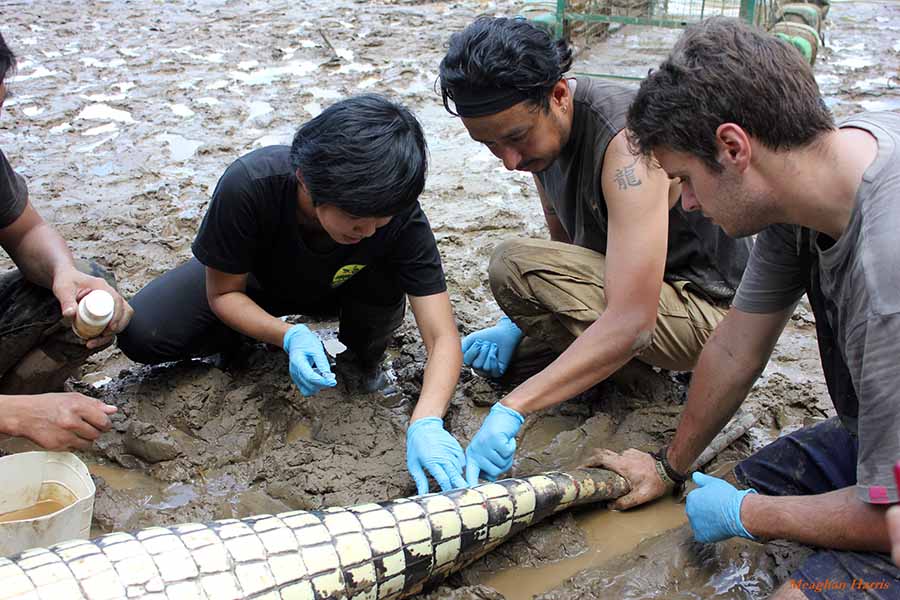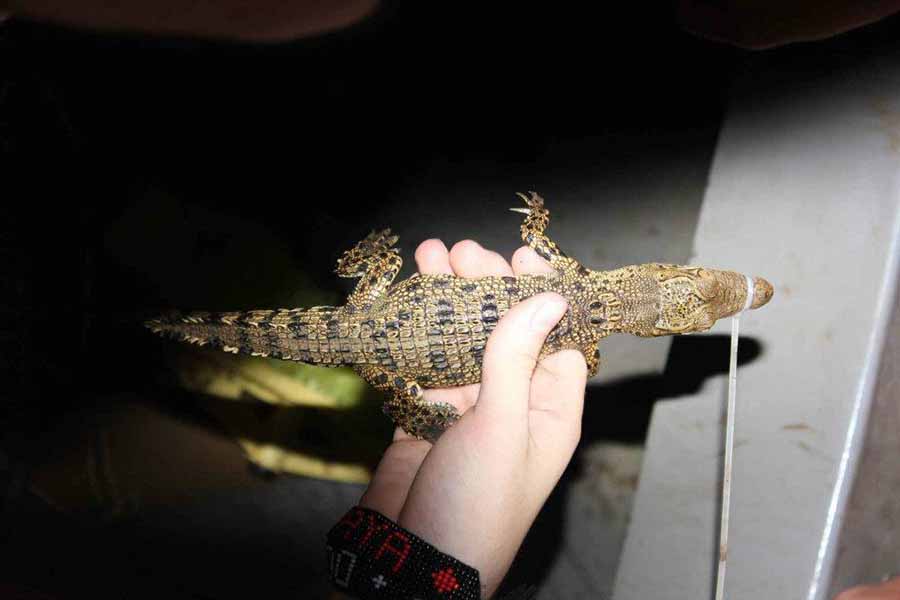Assessing the Impacts of Habitat Fragmentation and Subsequent Anthropogenic Expansion on the Behavioural, Population, and Nesting Ecology of the Estuarine Crocodile, Crocodylus porosus.
About
PhD Researcher: Luke Evans
Institution: Cardiff University
Counterpart: Sabah Wildlife Department
Laboratory assistant: Anita Tahir
Overview:
The project sought to examine the effects of habitat loss and fragmentation on the ecology and population genetics of the estuarine crocodile (C. porosus). Additionally, the role played by humans in this anthropogenically-altered landscape was examined. The project utilised a host of technologies—some previously established and others completely novel—in crocodilian research to provide new insight into how these cryptic predators utilise the landscape. This project represents a first detailed look at Sabah’s crocodilian population and the first active crocodile research carried out in Sabah’s longest river. A major aim of the project was to establish baseline behavioural ecology data in equatorial rainforest ecotypes while examining how prior population fluctuations have impacted the genetic health of the region’s crocodiles. One major output from the project will be understanding how to move forward with a future management plan for Sabah’s crocodiles to mitigate future conflict while maintaining active and healthy wild populations.
Methods:
The project employed three major technological methodologies: satellite tracking, drone reconnaissance, and microsatellite and mitochondrial analysis.
Satellite Tracking
Implement three distinct satellite tracking technologies: Iridium, ARGOS, and remote download systems. Tags were all attached to the nuchal plate in accordance with the method set forth by Kay (2004). Tags were attached to male and female crocodiles, ranging from 2.12 m to 5.18 m.
Drone Reconnaissance
Drone technology was utilised for the first time in crocodilian research. This aerial photography utilising programmable autopilot technology allowed for the selective surveying of potential nesting habitats. Using a ‘fixed wing’ aircraft enabled single flights of in excess of 35 km. This level of aerial coverage provides a repeatable method of nest surveying. The results from confirmed nest sites allowed further refinement of modelled flight areas, ensuring that a high proportion of detection could be ensured with the minimum of flight time. For further details regarding methodology, please see Evans et al. (2015).
Microsatellite and mtDNA
Both microsatellite and mtDNA analysis are established methodologies utilised to provide an understanding of a range of demographic traits. The project sought to utilise these analyses to gain an understanding of the genetic health of the population, as well as to understand whether or not a recent population bottleneck had resulted in a decrease in observable heterozygosity. In order to do this, a locus from the control region of the mitochondrial genome was sequenced for 122 individuals captured from the Kinabatangan. Additionally, 24 microsatellite loci were selected from previously published works.
Results:
A total of nine individuals were tagged, with seven of those units providing usable data. Males were found to adhere to one of two behavioural strategies, territorial and nomadic, mirroring the findings of Campbell et al. (2013). Territory sizes were, however, found to be smaller than those described in Australia; this was attributed to increased prey availability and ecosystem productivity. Only two females were tagged and appeared to display behavioural strategy differences. However, further work is required to confirm this due to the small sample size.
Nests were detectable aerially using drones, and medium-large scale surveys were shown to be feasible. Nests were found to all display several similarities in terms of habitat characteristics, allowing for refined modelling of survey locations.
Outcomes:
- Stepping stone to a tangible management plan.
- Placing warning signs in areas deemed to be at high risk of human-crocodile conflict.

Estuarine crocodile, Crocodylus porosus, in Kinabatangan ©DGFC

